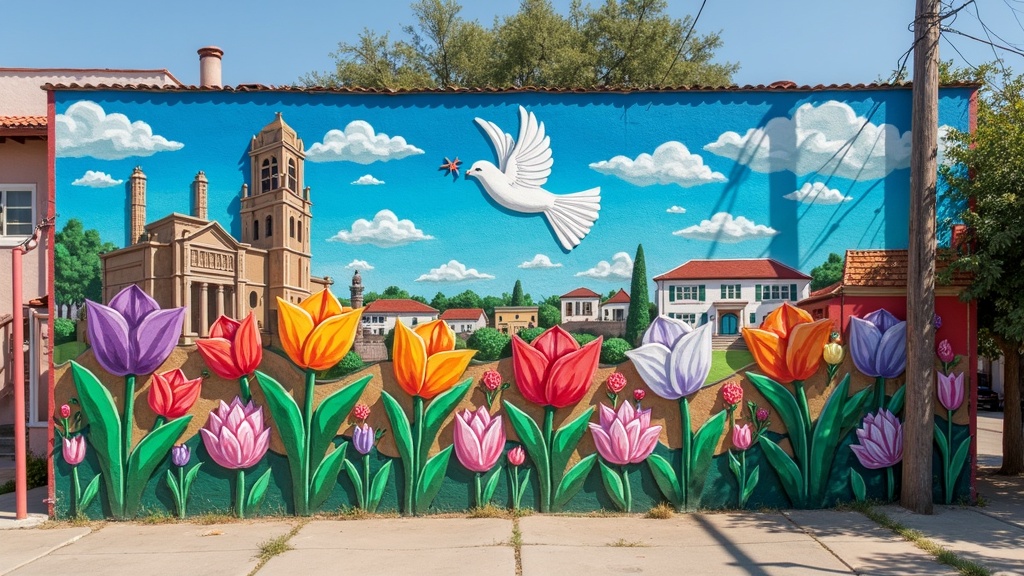Communities living under the ongoing shadow of cartel violence face some really tough challenges, but they’re often the first to step up and look for solutions when government support isn’t enough or just isn’t there. When cartel activity leaves entire neighborhoods and towns struggling with fear, loss, and uncertainty, everyday people come together in creative and practical ways to fight back against the damage. I’ve seen local groups take risks that go well beyond normal volunteering, working to reclaim spaces, support victims, protect young people, and keep hope alive—even when the odds feel stacked against them.

Understanding How Cartel Violence Hits Communities
Cartel violence doesn’t just show up in the news with headlines about high-profile arrests or big busts. On the ground, the effects run a lot deeper. Small businesses get squeezed for protection money (locals call this “cuota” or “derecho de piso”), schools may close for days if a shooting or lockdown happens nearby, and whole neighborhoods adjust to curfews or blockades when things heat up. Grocery shopping, taking the bus, or even running a simple errand can suddenly feel risky, especially on certain streets or rural roads. Many families deal with the uncertainty of not knowing where loved ones are—disappearances can become so common that the community doesn’t get closure or solid answers.
There’s also a psychological weight that never really lifts. People adapt, sure, but living with ongoing threats, rumors, and visible violence causes lasting stress. It can be hard to trust outsiders, local authorities, and even neighbors. When everyone withdraws, social ties get weaker, and the sense of community starts to fray. For a lot of families, economic worries pile on top: some businesses leave for safer cities, others shut their doors, and jobs dry up. The threat of forced displacement, having to leave everything behind, is a worry that keeps people up at night.
The ripple effects of losing access to basic services or safe travel also hit the vulnerable hardest. Elderly people, children, and those living with disabilities often face even greater risk. Schools turning into temporary shelters, or clinics closing after threats, forces families to completely rethink their daily lives. Even local festivities, which once brought joy and a break from all the stress, can be canceled for safety reasons, leading to even deeper isolation and sadness.
The Criminological and Legal Side of Community Responses
I’ve learned that communities get creative because the alternative is to do nothing and let things get worse. There’s a big difference between informal safety efforts, like neighborhood watch groups, and groups that arm themselves or act as “self-defense forces.” Some areas in Mexico have seen both approaches as residents tried filling the vacuum left by an overwhelmed or untrustworthy state.
In criminology, there’s the idea of collective efficacy, which basically means that when neighbors band together and support shared values, they can curb crime and reinforce safety norms. The opposite happens when everyone is scared to even speak up. Another theory, routine activity theory, focuses on how changing everyday habits (walking in groups, locking up earlier, keeping watch) can reduce the risks of cartel targeting. Resilience theory looks at how communities find ways to adapt, sometimes even growing stronger under pressure as they come up with new problem-solving skills.
Legally, community action has clear lines that are sometimes hard to see in day-to-day life. In Mexico, the constitution says only the state has the right to use force. That makes armed self-defense groups a gray area or, if they’re not officially recognized, outright illegal. The U.S. has its own mix of state patrol laws, neighborhood watch rules, and specific bans on private militias, especially when things cross into using force or detaining people. Community groups need to walk a line to avoid getting tangled in legal trouble, even if their goals are safety and peace.
What Community Initiatives Combating the Effects of Cartel Violence Actually Look Like
When people hear “community initiatives,” it’s easy to picture big marches or dramatic standoffs. But most actions are small, consistent, and built on teamwork. Here’s how these local efforts usually take shape:
- Youth Engagement Programs: Sports leagues, afterschool clubs, or art workshops for kids at risk of recruitment. Young people get safe spaces and positive mentors, helping steer them clear of cartel influence.
- Victim Support and Psychosocial Care: Peer-run groups, church-based counseling, and local NGOs often offer grief support, trauma counseling, and emergency help for families affected by violence or disappearances.
- Community Safety Efforts: Neighbors use WhatsApp groups or CB radios to warn about risky situations. Block captains might organize safe walks for kids. Sometimes communities work with sympathetic law enforcement in a neighborhood watch setup that doesn’t cross legal lines.
- Economic and Social Resilience: Cooperatives and community gardens help neighbors earn income together and build trust. Small business support and microloans make a big difference where regular banking is almost impossible.
- Truth-Telling and Advocacy: Victims’ collectives and advocacy groups push for justice and policy changes, sometimes documenting abuses and running public education campaigns. They might also support candidates promising anti-corruption reforms.
Community events and cultural programs are also used to foster togetherness. Cooking classes, neighborhood cleanups, or local holiday celebrations actively bring people together in safe, visible ways. Sharing food or traditions helps make connections when trust is in short supply.
Community Action In Mexico: What Grassroots Looks Like Up Close
Mexico’s map is dotted with stories of ordinary people stepping up when things get rough. In big cities like Guadalajara, church groups and student associations run youth mentorship programs and safe spaces, while larger umbrella organizations like Seguridad, Justicia y Paz document violence trends and push reforms. In rural Michoacán or Guerrero, community police groups (sometimes legally recognized, sometimes not) set up checkpoints or coordinate communications. Victims’ collectives build cross-state networks, organizing marches for missing loved ones and running searchable databases for the disappeared.
NGOs bridge the gaps the government leaves; some help families relocate quietly, while others train local leaders in trauma recovery. Neighborhoods hit by displacement have even started their own radio stations or art cooperatives to keep spirits high, sending a public message that life continues and connection matters. In some villages, teachers who once had to teach behind locked doors are now part of community safety councils. These collaborations make daily life possible, even amid great uncertainty.
United States: Border Initiatives and Response to Cartel-linked Harm
Across the border in communities from Texas to California, I’ve seen local organizations step up, especially in areas directly affected by smuggling, trafficking, or the opioid crisis. Youth prevention efforts focus on kids in high-risk border towns, blending job skills training with cultural and athletic programs to keep new generations out of organized crime. Addiction recovery groups team up with Mexican partners to offer bilingual support and harm reduction resources to families caught between both sides of the border.
Diaspora communities—people with family ties on both sides—run cross-border aid projects, organize advocacy campaigns for human rights, and share safety info quickly when something happens either in Mexico or the U.S. A lot of these programs work in both Spanish and English, making sure no one gets left out because of a language barrier. Community legal clinics help families understand their rights, and digital campaigns spread the word about emergency resources.
Cross-Border and Binational Community Networks
Some of the most creative responses come from groups that ignore borders. Binational faith coalitions, for example, protect migrants in dangerous stretches of the journey north, offering water, shelter, and legal aid. Migrant support groups in cities like El Paso or Tijuana provide safe houses, legal clinics, and workshops so people can make informed decisions and avoid falling into trafficking traps. Advocacy networks connect families searching for missing relatives, sharing leads and keeping hope alive.
Cultural networks also link up communities to celebrate shared heritage and solidarity. Binational music festivals, art exhibitions, and traditional dance events become spaces of unity and resistance. These events are acts of hope that show life and culture pushing back against a climate of fear.
Staying Legal and Avoiding Pitfalls
It’s really important for communities to work within the law. Collaboration with official police sometimes helps, but there’s always a risk of co-optation, when authorities use community groups for their own agenda, or, worse, infiltration by organized crime. Vigilantism, when community action crosses into taking up arms or using violence, raises big risks for everyone involved, both legally and for public safety. Focusing on mutual support, partnership with trustworthy NGOs, and transparent, nonviolent action offers a safer path.
Stories of What Works (And When Things Don’t Go As Planned)
I’ve seen neighborhood women in Sinaloa quietly network to get food and school supplies to widows and orphans after intense violence. In Monterrey, youth-led mural projects reclaim city walls once covered in cartel graffiti, building pride and trust with each brushstroke. On the U.S. side, border coalitions have blocked gang recruitment by teaming up with schools and local police, catching warning signs early. But not every plan works out. Some communities that tried forming armed patrols ended up targeted by both cartels and authorities. There are tough lessons about the need for accountability, transparency, and community input at every step.
How To Organize Safely: Tips For Community Action
- Start with trusted friends and neighbors. Never work alone, and test any plan in small groups before going bigger.
- Link up with local NGOs or religious organizations. They often have experience with legal issues, risk assessment, and connecting to outside resources.
- Focus on nonviolent strategies: information sharing, youth prevention, victim support, and economic independence.
- Have clear codes of confidentiality. Only share sensitive info with absolute trust, and protect the identities of vulnerable people.
- Know the local laws. If in doubt, ask for legal advice from established groups, not just word-of-mouth guidance.
- Keep communication lines open—use group chats, radio, or community meetings to stay updated on concerns and changing situations.
FAQ: Community Initiatives and Cartel Violence
How do communities start organizing against cartel violence?
Most begin with small, informal meetings, sometimes at churches or community centers. Trusted leaders and active volunteers usually get involved first before expanding to wider coordination. The first steps often include gathering information, building trust, and pinpointing immediate needs—whether it’s emotional support for victims or finding safe spaces for kids after school.
Can communities really make a difference when up against organized crime?
Change isn’t overnight, but local action can slow violence, support healing, and help reclaim public space. Collective action is powerful, even where resources are limited. Even the smallest positive step signals hope to others and gives momentum for bigger changes down the road.
What are the biggest risks?
Exposure, retaliation, or legal trouble if actions cross into illegality. Careful planning and partnership with experienced NGOs or legal experts is really important. Taking small, nonviolent steps builds a safer base and helps communities stay out of the crosshairs of both authorities and criminal groups.
Grassroots responses to cartel violence show just how resilient and resourceful communities can be under pressure. While the risks are real, the rewards, like rebuilding trust, protecting youth, supporting victims, and reclaiming hope, matter to everyone living with the fallout from organized crime. The road is tough, but every small win helps rebuild the fabric of community life, showing that even in the darkest times, hope and solidarity can make a difference.
